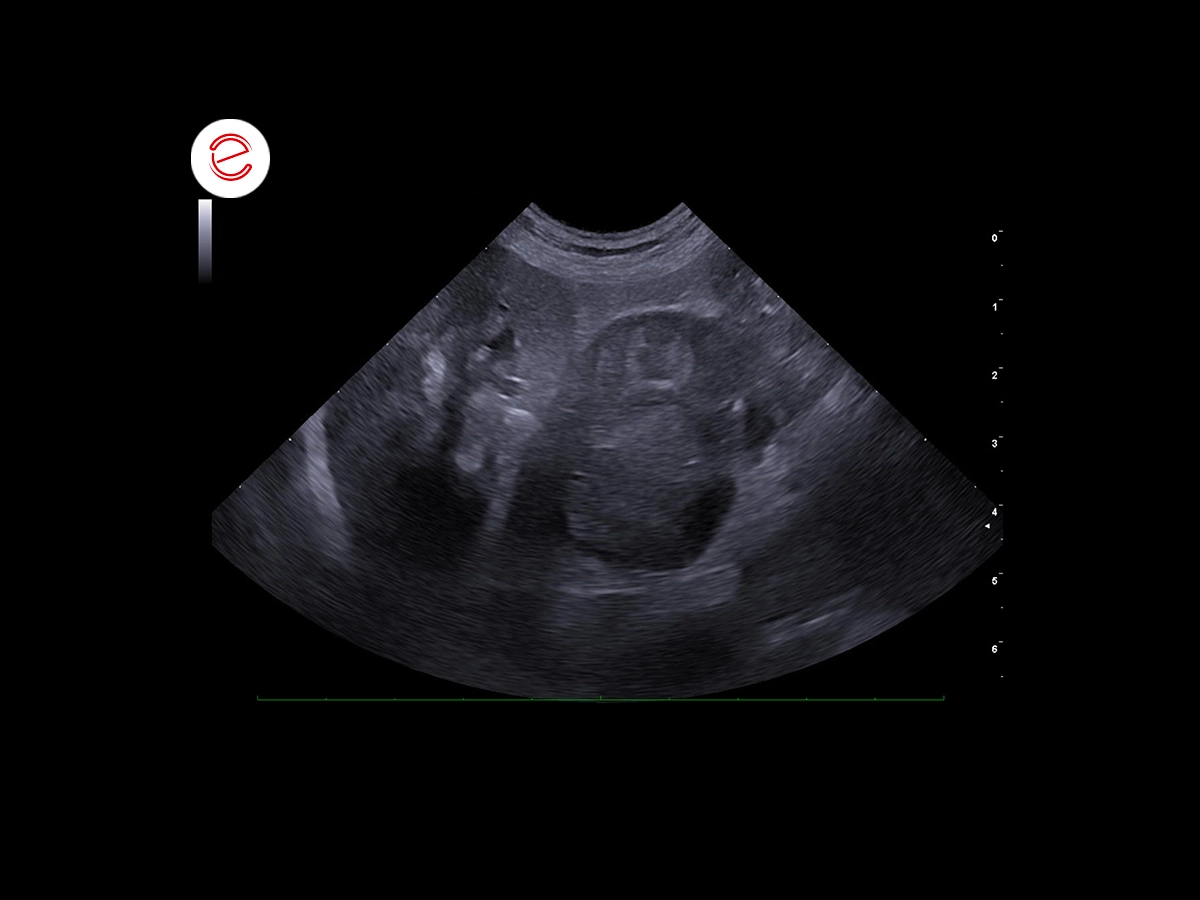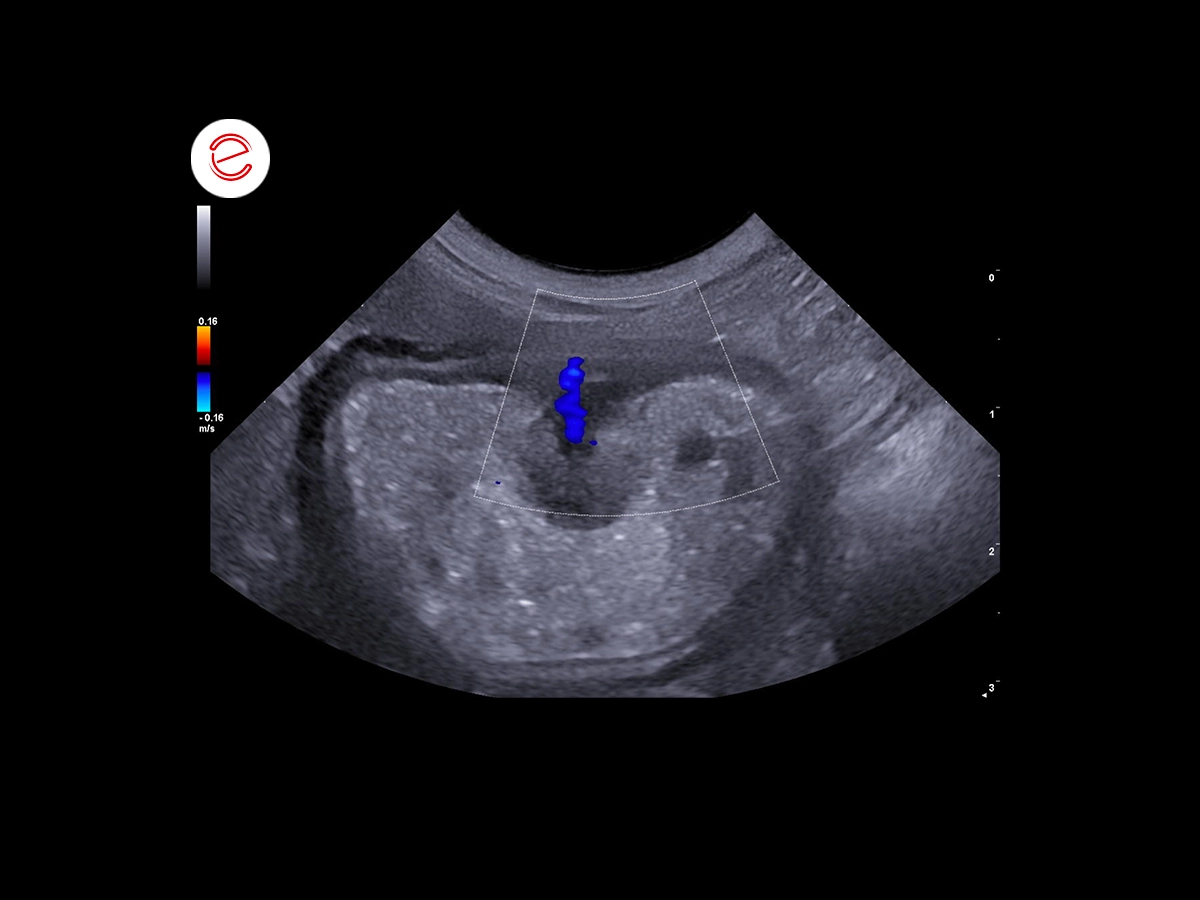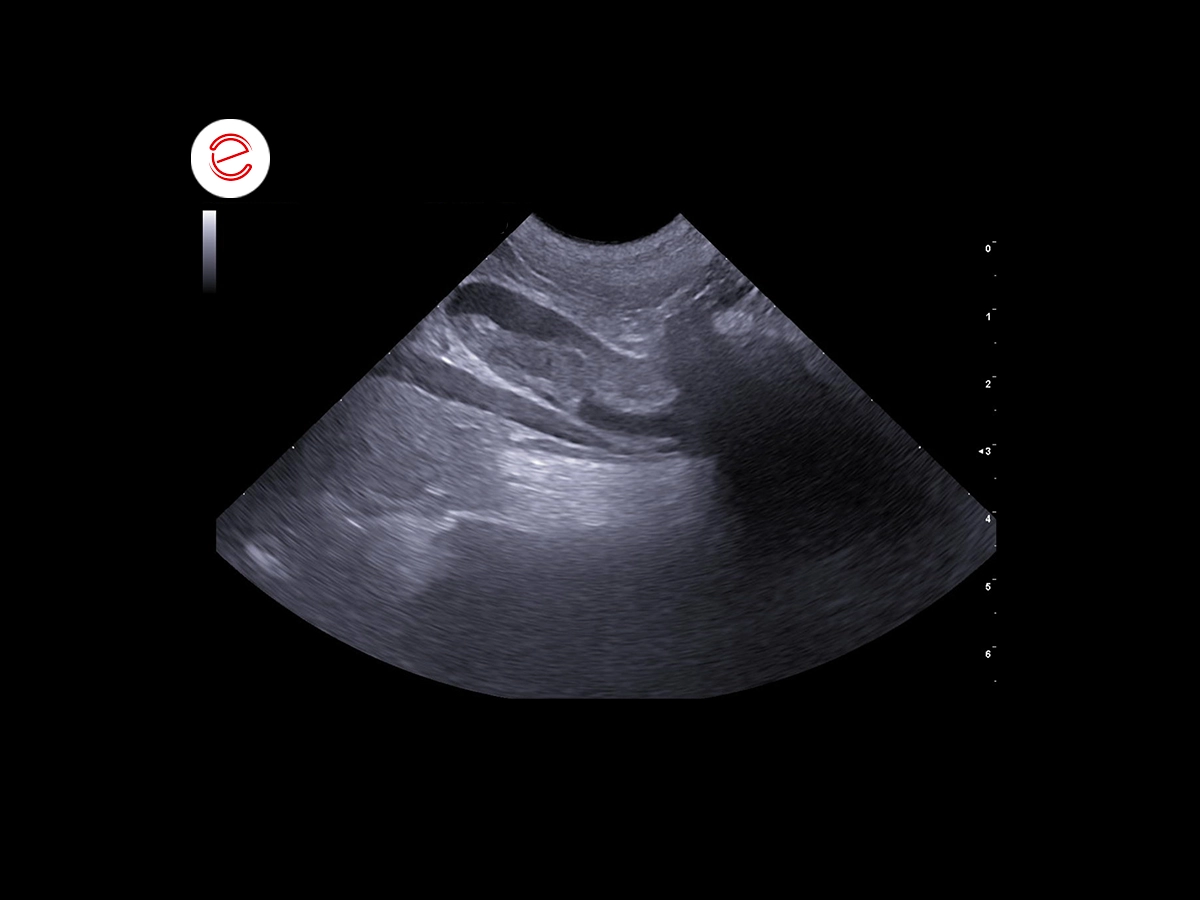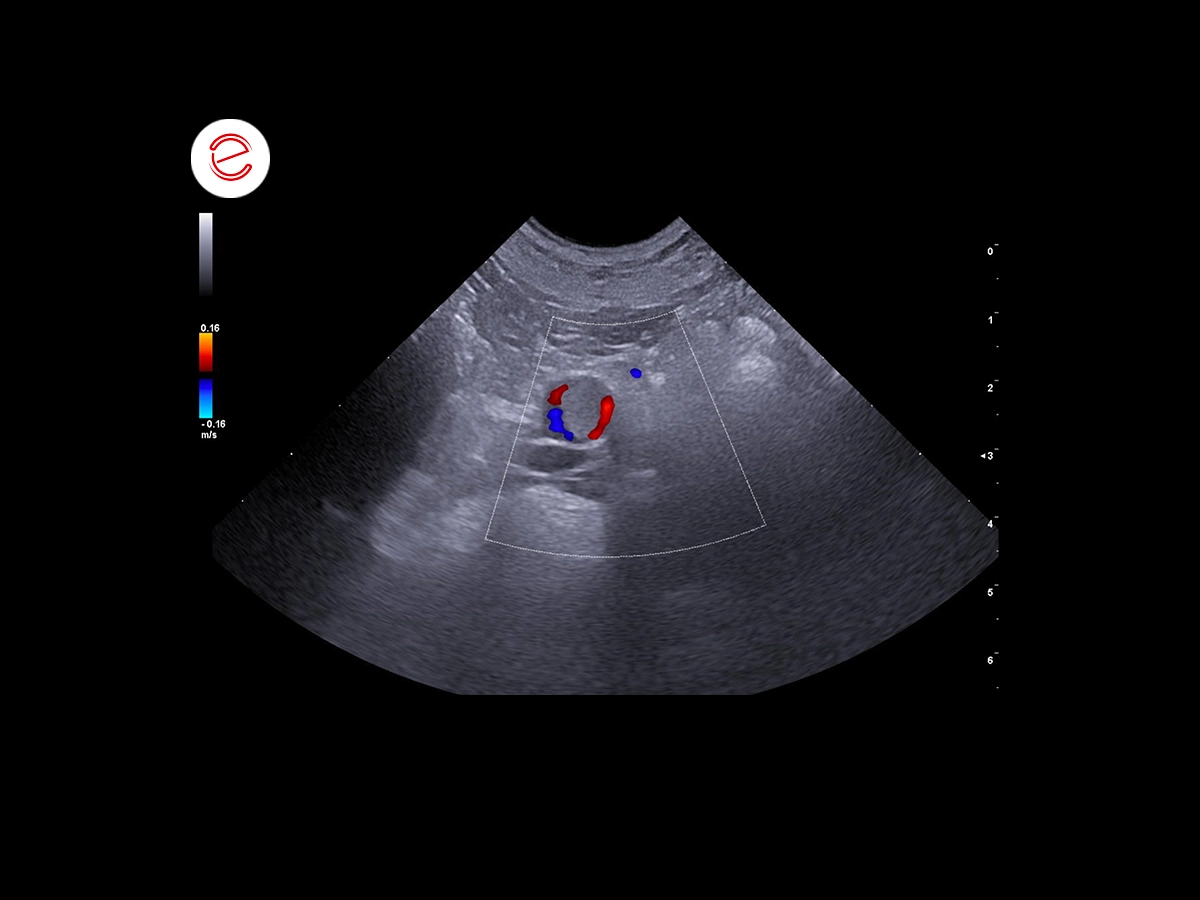Adrenal hyperadrenocorticism
Identification and history
- Name: Zara
- Report and medical history: dog, Jack Russell Terrier, Female neutered, 16y
No clinical signs, DUDE within normal limits.
Pot-belly, no PU/PD, increased liver enzymes on biochemistry.
Adrenal hyperadrenocorticism is suspected.
Diagnostics

Right adrenal gland is markedly increased in size (3.3 cm) due to the presence of a heterogeneous mass. The latter is lining the caudal vena cava; however, a possible wall infiltration cannot be excluded.

Urinary bladder presents hyperechoic non-gravity dependent material.
Wall thickness within normal limits.
An irregularly-rounded parietal lesion, protruding into the lumen and positive on color Doppler interrogation, is observed arising from the left ventro-lateral aspect of the urinary bladder neck.

Presence of mixed fluid/gaseous content filling the gastric lumen.
A focal mucosal thickening of the greater curvature is observed, protruding into the lumen and positive to color Doppler interrogation.
Wall layering is preserved.

A fusiform endoluminal hyperechoic structure, partially obstructive, is observed in the aortic lumen between the renal artery and the aortic trifurcation.

Transverse section of the aortic lesion previously described, with the hyperechoic partially obstructive endoluminal structure and surrounding blood flow.
Images were acquired with MyLab™9VET ultrasound system.
Conclusions and treatment
- Right adrenal neoplasia (DDx adenoma, carcinoma, pheochromocytoma), likely secreting considering controlateral adrenal atrophy.
- Non-specific bladder lesion DDx: polypoid cystitis vs neoplasia (e.g. TCC) vs idiopatic.
- Gastric lesion DDx polyp vs neoplasia (e.g. lymphoma, carcinoma, leiomyoma).
- Aortic thromboembolism.
Diagnostic confirmation of adrenal hyperadrenocorticism was obtained with dexamethasone suppression test; traumatic catheterization is proposed for further evaluation of bladder mass, and endoscopic biopsy for gastric lesion.
Dr. Lapira Luca, DVM, Radiology Department OVU, University of Milan, Lodi, Italy

MyLab is a trademark of Esaote spa.
Technology and features are device/configuration-dependent. Specifications subject to change without notice. Information might refer to products or modalities not yet approved in all countries. Product images are for illustrative purposes only. For further details, please contact your Esaote sales representative.
Other canine clinical cases you may be interested in
Discover the challenges faced, the examinations performed, the solutions adopted, and the treatments recommended.

MARCH 2025
Adrenal tumors
Carmelo Marco Bruno, DVM, specialist in pathology and clinic of companion animals, accredited with FSA and BOL

MAY 2024
Synovial Sarcoma
Daniel Sáez, DVM
Centro de Diagnóstico Veterinario Vetpoint®, Chile

MARCH 2024
Right atrial Hemangiosarcoma
Angeles Carrión DVM, Accre. AVEPA in Cardiology
Vetocardia, cardiología y ecografía veterinaria, Murcia, Spain
